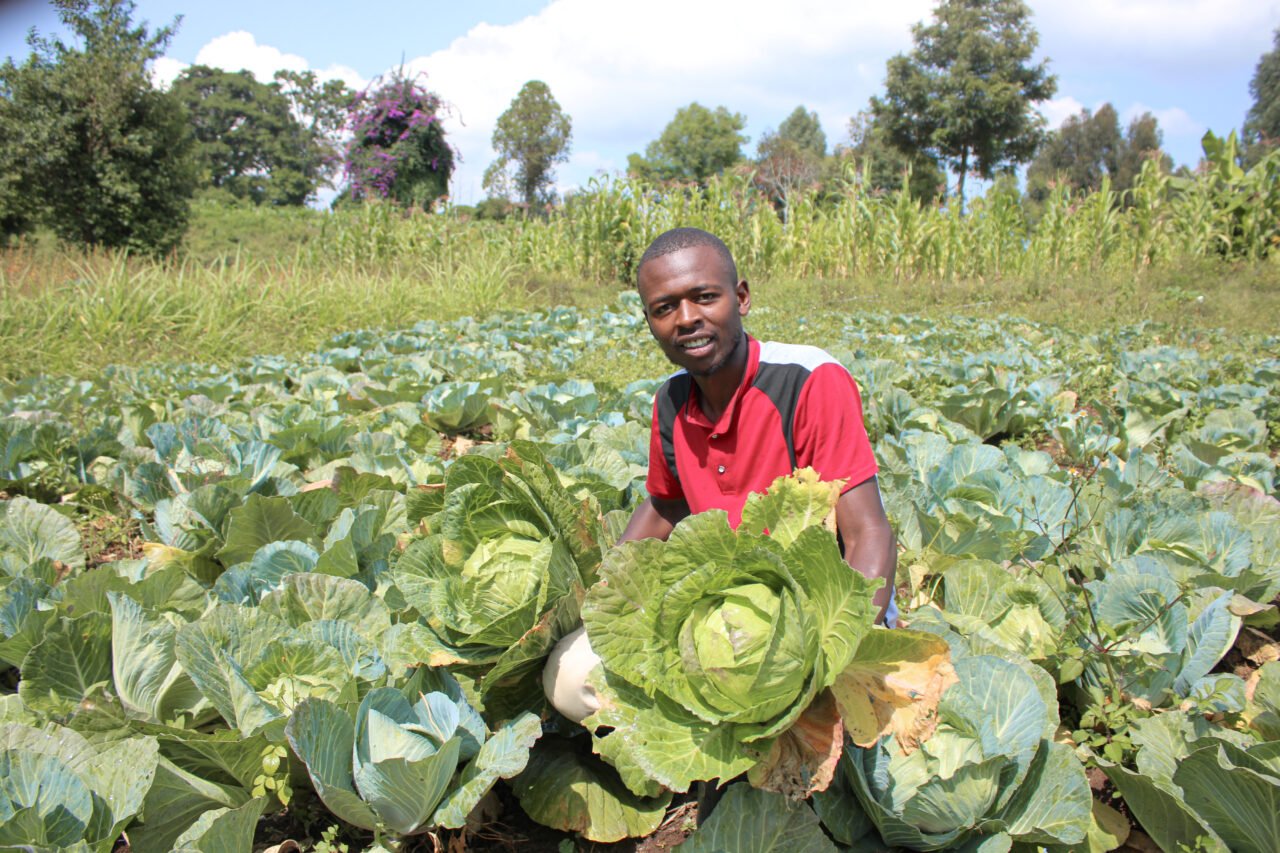No soil, no problem: Kibera’s youth embrace climate-friendly farming
By Lisa Murray, Communications Officer at the World Food Programme
When 16-year-old Mercy joined high school in Kibera, Kenya’s largest informal settlement, she was set on becoming a doctor. That was until she learnt a way of growing vegetables and leafy greens without soil: hydroponics. She had a new dream. “I was amazed,” she said standing next to a row of spinach sprouting out of old yoghurt pots in a recycled drainpipe at the Olympic Secondary School.
“They’re planting crops without using soil? I’ve never seen this in my life. I was very impressed with this. So in the future, when I grow up, I want to be a farmer.”
Hydroponics is a cultivation technique that allows plants to grow in a water-based nutrient solution which uses up to 90% less water and 75% less space while producing crops twice as quickly as traditional agriculture.
It’s ideal for high-density urban environments like Kibera, where land and water are scarce and access to nutritious foods is limited. According to a 2017 study, more than one in five children in Kibera suffered from stunted growth – a child who is too short for his or her age as a result of chronic or recurrent malnutrition. Although the technology sounds space-age, hydroponics enables students to cultivate nutritious food with low-tech systems that use materials which are both readily available and affordable.
Mercy’s passion for hydroponics was ignited after attending agricultural classes at her school. Engaging youth in farming is vital for creating jobs, improving future food security and driving economic growth in Kenya because it is an ‘ageing sector’, where the average age of those engaged in agriculture is over 60 years. The World Food Programme’s H2Grow project installed a hydroponic unit at her school for use in agriculture classes to introduce learners to climate-friendly farming, and to provide nutritious food to students.
In the face of rapid urbanisation and climate shocks, the need for sustainable solutions that address food security like hydroponics has never been more urgent. The H2Grow project, which started in 2022, has been scaled up in both urban and semi-arid areas such as Wajir, Isiolo, and Makueni.
“We know that good nutrition is essential for children’s learning and development. By integrating hydroponics into school meals, WFP is not only improving access to nutritious food but also providing students with valuable skills and knowledge about sustainable agriculture,” said Brian Wanene, WFP’s Portfolio Innovation Manager.
“We’re helping to build a generation of climate-smart farmers who can contribute to a more food-secure future.”
The fresh vegetables like spinach, kale and tomatoes grown at Mercy’s school, one of 15 across Kenya supported by WFP, are harvested twice a week and served to the school’s one thousand two hundred students for lunch. This means Mercy and her peers are able to eat fresh vegetables on a regular basis, something uncommon in her neighbourhood, and in a country where one in four don’t regularly consume dark leafy vegetables.
The success of the project has inspired Mercy to build her own hydroponics system, made from recycled plastic drainpipes and scrap metal, in a narrow courtyard at her friend Omar’s house. She grows kale and spinach, providing her family with nutritious food and enough surplus to sell for around 300 Ksh per week.
“We use a small piece of land, so it is very economical,” said Mercy. “Our neighbours came asking us what is this? Can you sell some of your produce to us?”
For Mercy, this means she gets to regularly eat her favourite food – spinach – and is determined to transform access to nutritious food in her community and generate employment.
“In slum areas we are suffering with food shortages,” Mercy said. “So once I’ll be a farmer, I’ll get to teach other people about hydroponics. I’ll provide employment for many people.



